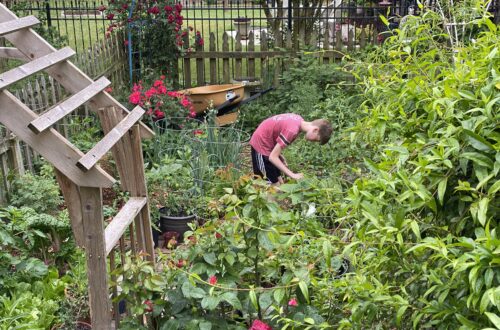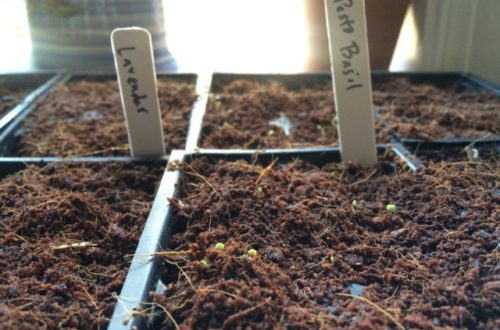6 Tips for Growing Tomatoes
Over the past few years, I’ve picked up some valuable tips for growing tomatoes. This by no means implies that each summer I’m guaranteed a beautiful crop, and in fact am yearly frustrated by the usual problems – pests, disease, cracking, blossom end rot. These tips can help improve crops.
1. Pinch those suckers. Different gardeners will tell you different types of tomatoes should or shouldn’t have the suckers removed. If you are planting in a small space and deal with crowding, go ahead and pinch them to make sure to keep the growth in check and allow plenty of air movement around plants. My first crop of indeterminate tomatoes (they will keep vining out all summer) had plants with 5 – 8 main stems. I got tons of tomatoes, but all the other crops that I had interplanted were shaded out. Also, the tomatoes dwindled in size as the summer went on and eventually succumbed to disease because they were all up in each others’ business.
2. Remove the bottoms sets of leaves so that none are touching the ground. Continue removing old, yellow foliage. When you water the garden or it rains, the leaves on the bottom are easily splashed and can pick up undesirables from the surrounding ground. Also, the bottom leaves don’t do as much to support the plant growth the more they are shaded as the plant grows. Help the plant conserve energy for tomato production.
3. Plant the suckers. This is something new I am trying this year. This is really only valuable if you have a longer growing season and can start new plants on into the spring or early summer. If you end up losing some plants early on, no sweat! Just bring in the sucker reserves. Here’s a useful site for guidance of how to make the most of suckers: http://www.mnn.com/your-home/organic-farming-gardening/stories/how-to-get-a-second-crop-of-tomatoes-for-free
4. If you spot a diseased plant, ditch it. So many times I’ve babied a diseased plant, pulling leaves and branches, only to wish I’d ditched it at the first sight of a problem. Pests such as thrips will hop from one plant to the next spreading the disease, so yank them and bag them, and take them to the curb for the yard waste pickup.
5. Water less frequently but more deeply. Early in the spring while seeds are germinating, you need a daily moisture mist for shallow, tender roots. As the season progresses, tomatoes will thrive if their roots are given a chance to dig down deep. Watering less frequently but with a greater volume allows the water to sink down deeper and support that root growth. This will also help them be less sensitive to the hot, dry days as the roots will have access to water stored in the soil.
6. Water in the early morning. When possible, water in the early morning to prevent excessive evaporation losses.Think twice about watering in the evening, as plants covered in moisture all night long are more prone to mildew growth. If you are able to water with a drip hose, applying water directly to the soil, that is even better!
 |
| Pinched suckers in a jar |
What tips would you add to this list?



2 Comments
Shady Gardener
Don't plant tomatoes in the same place two years in a row…
A nice informative post. I'd had no idea about starting suckers.
paige.puckett
Great tip! I usually have a primary plot of tomatoes that I rotate, and then plant random ones along the fence. I guess I partially rotate.